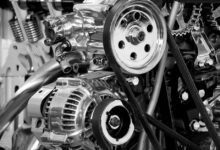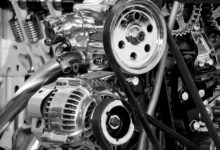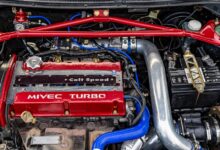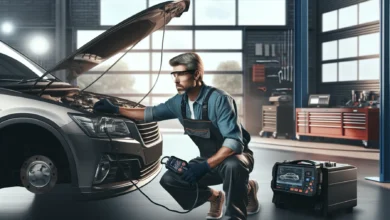Car Maintenance Costs by Model: A Comprehensive Guide
Sponsored Ads
Introduction
Maintaining a car is an essential aspect of responsible ownership. Regular servicing and repairs help keep your vehicle running smoothly and safely, preventing costly breakdowns and ensuring a longer lifespan. However, car maintenance costs can vary significantly depending on the make, model, and age of your vehicle. This guide explores the factors that influence car maintenance costs by model and provides detailed information to help you make informed decisions about your vehicle’s upkeep.
Before delving into the specifics, it’s important to understand the different types of maintenance costs and their impact on your budget. These include:
- Scheduled maintenance: Regular servicing as recommended by the manufacturer, including oil changes, filter replacements, and tire rotations.
- Unscheduled maintenance: Repairs or replacements caused by unexpected events, such as accidents or mechanical failures.
- Preventive maintenance: Services aimed at preventing future problems, such as replacing aging components or addressing potential issues identified during inspections.
The frequency and cost of maintenance will depend on several factors, including:
- Make and model: Different manufacturers and models have varying maintenance requirements and part costs.
- Age and mileage: Older vehicles with high mileage may require more frequent and costly repairs.
- Driving habits: Aggressive driving or frequent towing can accelerate wear and tear.
- Location: Labor costs and parts availability can vary by region.
- Warranty coverage: Extended warranties can provide peace of mind and reduce maintenance expenses during the warranty period.
Understanding these variables will help you estimate the potential maintenance costs associated with a particular vehicle and make informed decisions about your budget and vehicle ownership.
Strengths and Weaknesses of Car Maintenance Costs by Model
Every car model has its own strengths and weaknesses when it comes to maintenance costs. Some factors contribute to lower costs, while others may lead to increased expenses. Let’s examine these aspects in detail:
Lower Maintenance Costs
Certain factors can contribute to lower maintenance costs for specific car models, including:
- Reliability and durability: Models with a reputation for reliability and durability typically have fewer unscheduled repairs and a longer lifespan, reducing overall maintenance costs.
- Widely available parts: Models with a large market share often have widely available and affordable replacement parts, minimizing repair expenses.
- Standardized components: Models that share common components with other models within the same manufacturer’s lineup may benefit from economies of scale, leading to lower parts and labor costs.
- Long maintenance intervals: Some models have longer scheduled maintenance intervals, reducing the frequency of visits to the mechanic and associated expenses.
Higher Maintenance Costs
Conversely, certain factors can lead to higher maintenance costs for specific car models, such as:
- Limited availability and expensive parts: Models with limited production runs or specialty components may have higher parts costs and limited availability, increasing repair expenses.
- Complex designs and advanced technology: Models with intricate designs or advanced technological features may require specialized maintenance and more expensive parts, leading to higher labor and material costs.
- Frequent scheduled maintenance: Models with short scheduled maintenance intervals require more frequent servicing, increasing the total cost of maintenance over time.
- Performance and luxury vehicles: High-performance and luxury vehicles often have more complex engines and components that require specialized maintenance techniques and expensive parts.
Car Maintenance Costs by Model Table
The following table provides an overview of average car maintenance costs by model. These estimates are based on industry research and may vary depending on specific factors:
| Make and Model | Average Annual Maintenance Cost |
|---|---|
| Toyota Camry | $500 |
| Honda Civic | $450 |
| Ford F-150 | $700 |
| Chevrolet Silverado | $650 |
| Tesla Model 3 | $800 |
| BMW 3 Series | $1,000 |
| Mercedes-Benz C-Class | $1,200 |
FAQs on Car Maintenance Costs by Model
Here are answers to commonly asked questions regarding car maintenance costs by model:
FAQs
1. What is the most expensive car model to maintain?
The most expensive car models to maintain typically include luxury and high-performance vehicles with complex designs and advanced technology, such as the Mercedes-Benz S-Class or Bentley Continental GT.
2. What is the least expensive car model to maintain?
The least expensive car models to maintain are often compact and economy-focused models with reliable and widely available parts, such as the Toyota Corolla or Honda Civic.
3. Do newer car models cost more to maintain?
Newer car models tend to have more advanced technology and safety features, which can lead to higher maintenance costs compared to older models with simpler designs.
4. How can I reduce my car maintenance costs?
You can reduce maintenance costs by performing regular scheduled maintenance, using quality parts, and comparing prices from different mechanics or dealerships.
5. What should I look for when choosing a car model based on maintenance costs?
Consider factors such as reliability, availability of parts, scheduled maintenance intervals, and complexity of the design when evaluating car models for maintenance costs.
6. How often should I service my car?
Refer to the manufacturer’s recommended maintenance schedule for your specific car model. Follow the guidelines to ensure optimal performance and longevity.
7. What is covered under a car maintenance warranty?
Car maintenance warranties typically cover scheduled maintenance services, such as oil changes, filter replacements, and inspections, for a specific period or mileage.
8. How do I find a reputable mechanic for car maintenance?
Seek recommendations from friends or family, read online reviews, and check for certifications and experience when selecting a mechanic for car maintenance.
9. What are the signs that my car needs maintenance?
Watch for signs such as unusual noises, changes in performance, warning lights on the dashboard, or leaking fluids, as these may indicate the need for maintenance or repairs.
10. How can I extend the lifespan of my car?
Regular maintenance, responsible driving habits, avoiding harsh conditions, and timely repairs can help extend the lifespan of your car.
11. What are the consequences of neglecting car maintenance?
Neglecting car maintenance can lead to reduced performance, safety hazards, costly repairs, and premature failure of vehicle components.
12. How does car maintenance affect resale value?
Well-maintained cars with a documented maintenance history typically retain a higher resale value compared to vehicles with neglected maintenance.
13. Can I perform some car maintenance tasks myself?
Some basic car maintenance tasks, such as changing air filters or topping up fluids, can be performed DIY if you have the necessary skills and tools.
Conclusion
Understanding car maintenance costs by model is essential for making informed decisions about vehicle ownership. By considering the factors that influence maintenance expenses, you can choose a car that aligns with your budget and lifestyle. Remember to consult the manufacturer’s maintenance schedule, find a reputable mechanic, and prioritize regular servicing to ensure a reliable and long-lasting vehicle.
By taking a proactive approach to car maintenance, you can save money in the long run, enhance your driving experience, and protect your investment in your vehicle.
Remember, proper car maintenance is not just about spending money; it’s about preserving the value, safety, and performance of your vehicle for years to come. By understanding the factors that affect car maintenance costs by model and making informed decisions, you can ensure a reliable and enjoyable driving experience while maximizing the return on your automotive investment.










